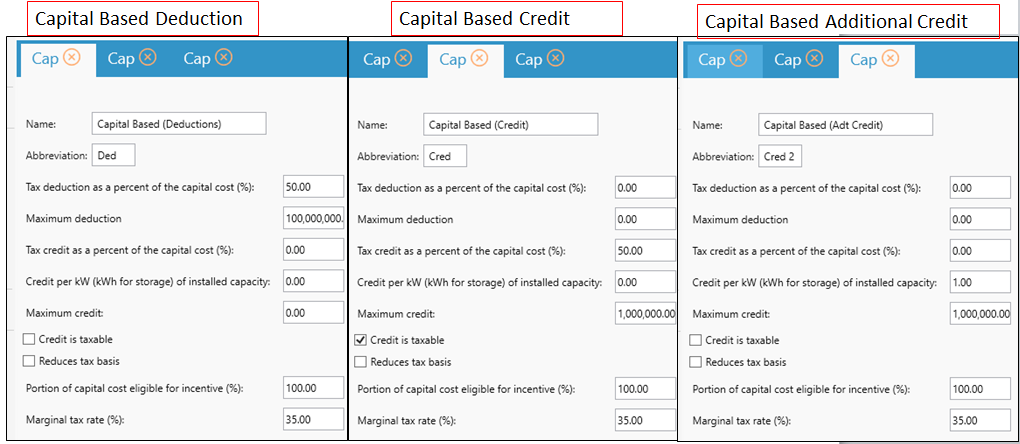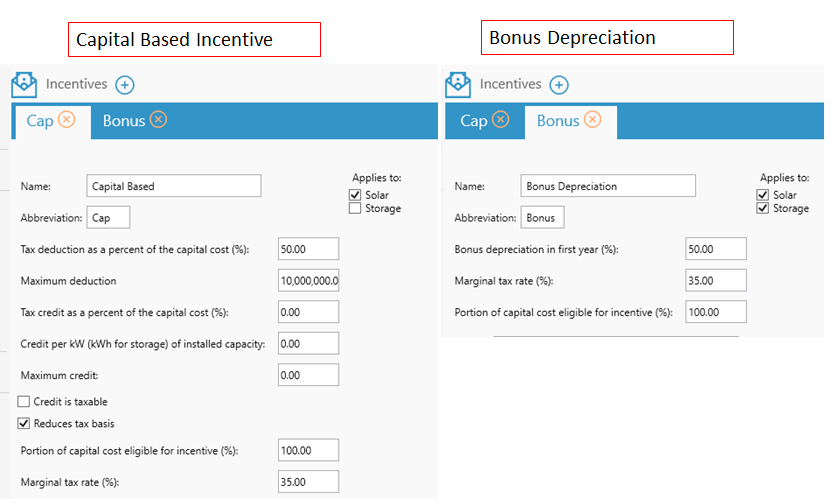
HOMER Grid 1.10

![]()
Order of multiple incentives
If you have multiple incentives applied to the same component, it could happen that the value of one incentive affects another incentive. The order in which the incentives are calculated are predefined in HOMER Grid. The order is:
1. Self-Generation Incentive Program
2. Capital Based
3. Investment Tax Credit
4. Production Based
5. Bonus Depreciation
6. Depreciation
7. Modified Accelerated Cost Recovery System (MACRS) depreciation
You can see the effect of this order when you add multiple incentives. The order in which the incentives show up in the user interface will follow the above hierarchy. Example screenshot of multiple incentives:

You can also add multiple incentives of the same kind. The below screenshot is an example of 3 capital based incentives. The first one, is only for tax deductions, the second one for credit which is taxable, and the third one for additional credit that is not taxable.

Example of multiple incentives
Below is an example of two different types of incentives applied to the PV component.

Let us assume the PV is 100 kW and has a capital cost of 100,000$. Since the capital based incentive is applied first,
•The total tax deduction is = 0.50 * 100,000 $ = 50,000 $
•The actual value of this deduction is = 0.35 * 50,000 $ = 17,500 $
•The bonus depreciation is applied after the capital based incentive. Since the capital based incentive reduces tax basis, the new capital cost on which bonus depreciation is applied is = original capital cost - tax deduction = 100,000 - 50,000 = 50,000 $
•The bonus depreciation = reduced capital cost * 0.50 * 0.35 = 8,750$
